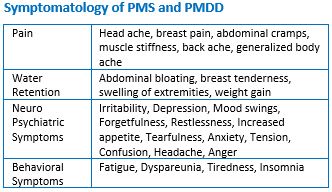Ayurvedic management of Premenstrual Syndrome - A Case Study
Keywords:
Premenstrual Syndrome, Kalyanaka Kashayam, Drakshadi Kashayam, Thalam, Ksheerabala, Rajaswalacharya, Yoga Asanas, PranayamaAbstract
Reproductive health is a condition in which the reproductive process is accomplished in a state of complete physical, mental and social well-being and is not merely the absence of disease or disorders of the reproductive process. Most women experiences mood and behavioral changes apart from physical discomfort associated with the menstrual cycle. Although there are both ups and downs associated with the cycle, it is the more problematic part of the cycle that are characterized, as premenstrual syndrome. Premenstrual syndrome is a psycho neuro endocrine disorder of unknown etiology, often noticed just prior to menstruation. There is cyclic appearance of a large number of symptoms during the last 7-10 days of the menstrual cycle. It is important for two reasons, firstly because the symptoms of PMS are responsible for socioeconomic loss and secondly because of associated legal and women’s rights issues that have arisen in conjunction with personal accountability during the premenstrual period. An estimated 3% to 5% of ovulating women appear to suffer from symptoms so marked that they qualify for a diagnosis of premenstrual dysphoric disorder. A 15-year-old female patient reported to OPD with the complaints of head ache, irritability, depression, extreme mood swings, lack of concentration, physically injuring herself, bloating 7-8 days prior to menstruation and it resolves with the onset of menstruation. After proper physical and mental status examination, based on history, presenting symptoms and diagnostic criteria the case was diagnosed as Premenstrual Syndrome. So, the protocol for treatment planned was internal administration of Kalyanaka Kashayam, Drakshadi Kashayam, Thalam with Ksheerabala for 3 months along with proper Rajaswalacharya. Yoga Asanas and Pranayamas were also advised.
Downloads
References
Dutta DC. The text book of Gynaecology, 6th edition, Jaypee Brothers Medical Publishers (P) Ltd, New Delhi; 2013, p 182.
Vagbhata, Ashtanga Hrdayam, English translation by Prof K R Srikanta Murty, Vol II Uttarasthana, Chapter 6, verse 26-31, Varanasi; Choukamba Krishnadas Academy, Reprint 2005, p 61.
Sinimol. T. P. Probable Mode of Action of Kalyanaka Ghrita in Unmada (Insanity) Based on Analysis of Rasa Panchaka of Ingredients - A Review. International Journal of Ayurveda and Pharma Research. 2019;7(2):19-30.
Xu Y, Wang C, Klabnik JJ, O'Donnell JM. Novel Therapeutic Targets in Depression and Anxiety: Antioxidants as a Candidate Treatment. Curr Neuropharmacol. 2014; 12(2):108-19.
Vagbhata, Ashtanga Hrdayam, English translation by Prof K R Srikanta Murty, Vol II, Chikitsa Sthana, Chapter 1, verse 55-58, Varanasi; Choukambha Krishnadas Academy, 2003, p183.
Swathy SS, Indira M. The Ayurvedic drug, Ksheerabala, ameliorates quinolinic acid-induced oxidative stress in rat brain. Int J Ayurveda Res. 2010 Jan;1(1):4-9. doi: 10.4103/0974-7788.59936. PMID: 20532090; PMCID: PMC2876928.
Kanojia S, Sharma VK, Gandhi A, et al. Effect of yoga on autonomic functions and psychological status during both phases of menstrual cycle in young healthy females. Journal of Clinical and Diagnostic Research. 2013;7:2133–2139.
B.K.S.Iyengar, Yoga the Path to Holistic Health; Yoga for pre menstrual syndrome; Dorling Kindersley limited; 2008, Page 38















